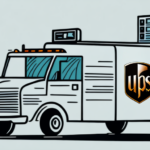Understanding the UPS Chargeback for Worldwide Express Shipments
Owning a business that regularly sends out shipments means you're likely familiar with UPS, one of the most prominent shipping carriers globally. While UPS is renowned for its reliability and extensive network, it also presents unique challenges, particularly UPS chargebacks. These chargebacks can erode your profit margins, leading to significant financial losses. In this comprehensive guide, we'll explore UPS chargebacks for worldwide express shipments, delving into what they are, why they occur, and strategies to prevent them.
What is a UPS Chargeback?
A UPS chargeback is a fee imposed on businesses when a shipment is misrouted, delivered late, or fails to comply with UPS policies and procedures. Typically, the chargeback fee mirrors the original shipping cost of the package, making it a substantial expense for businesses. According to UPS's most recent guidelines, chargebacks can accumulate rapidly, especially for businesses handling high volumes of shipments.
Understanding the root causes of UPS chargebacks is crucial for businesses aiming to minimize financial losses. Common reasons include:
- Incorrect or incomplete address information
- Insufficient packaging
- Non-compliance with hazardous materials regulations
- Improper labeling and documentation
By ensuring that packages are accurately labeled, securely packaged, and shipped in alignment with UPS policies, businesses can significantly reduce the risk of incurring chargebacks.
Why Does UPS Chargeback Occur for Worldwide Express Shipments?
UPS chargebacks for worldwide express shipments often arise due to non-compliance with UPS policies or delivery delays. Worldwide express shipments are inherently time-sensitive, and any delay can result in missed deadlines, dissatisfied customers, and financial setbacks for businesses.
Several factors contribute to these chargebacks:
- Incorrect Labeling: Missing or inaccurate recipient addresses, package weight, or hazardous material information can lead to misrouting or delayed deliveries.
- Packaging Issues: UPS has stringent guidelines for packaging and securing shipments. Packages that are not adequately protected risk damage during transit, leading to chargebacks.
- Customs Clearance Problems: International shipments must pass through customs. Inaccurate declarations or incomplete documentation can cause delays or rejections, resulting in additional fees.
According to a 2023 UPS report, improper documentation accounts for approximately 25% of all chargebacks in international shipments.
How to Avoid UPS Chargeback for Worldwide Express Shipments?
Preventing UPS chargebacks involves a combination of meticulous preparation and leveraging technology. Here are key strategies:
1. Ensure Compliance with UPS Policies
Provide accurate and complete shipment information, including weight, dimensions, destination, and any special handling instructions. Proper packaging, labeling, and documentation are essential.
2. Utilize Automated Shipping Software
Consider using UPS's automated shipping software to ensure adherence to policies and streamline the shipping process.
3. Choose the Right Shipping Service
Select the appropriate UPS service that aligns with your shipment's requirements. For example, UPS Worldwide Express offers specific benefits and has distinct documentation requirements for international shipments.
4. Stay Informed About UPS Policies
Familiarize yourself with UPS's latest policies regarding refunds and chargebacks to understand the procedures and avoid potential fees.
The Impact of UPS Chargebacks on Your Business
UPS chargebacks can significantly affect your business's profitability and reputation. Beyond the immediate financial burden of the fees themselves, chargebacks can lead to:
- Lost revenue due to repeated chargebacks
- Dissatisfied customers resulting from delayed or mishandled shipments
- Damage to your business's reputation, potentially leading to reduced customer trust
- Increased administrative efforts to dispute and manage chargebacks
To mitigate these impacts, businesses should proactively address the underlying causes of chargebacks and implement best practices for shipping compliance.
What are the Common Reasons for UPS Chargebacks?
Understanding the common triggers for UPS chargebacks can help businesses take preventive measures. These include:
- Late Deliveries: Failing to meet delivery deadlines, especially for express shipments, can result in chargebacks.
- Misrouted Packages: Incorrect addressing or labeling leading to shipments being sent to the wrong location.
- Policy Non-Compliance: Not adhering to UPS's packaging, documentation, or hazardous materials guidelines.
- Overweight or Oversized Packages: Exceeding UPS's weight or size limits for specific services.
- Damaged Packages: Poor packaging leading to damage during transit.
By addressing these areas, businesses can substantially lower their risk of incurring chargebacks.
How to Dispute a UPS Chargeback?
If you receive a UPS chargeback, timely and accurate dispute resolution is essential to avoid financial losses. Follow these steps:
- Review the Chargeback Notice: Understand the specific reason for the chargeback.
- Gather Documentation: Collect all relevant documents, including proof of delivery, package weight and dimensions, and compliance with documentation requirements.
- Submit a Dispute: Contact UPS customer service to initiate the dispute process, providing the gathered documentation as evidence.
- Follow Up: Monitor the status of your dispute and be prepared to provide additional information if requested.
Effective documentation and prompt action can increase the likelihood of a successful dispute.
Strategies to Minimize Your Exposure to UPS Chargebacks
Implementing strategies to reduce chargeback exposure can safeguard your business’s financial health:
- Automated Shipping Solutions: Use shipping software to ensure accuracy in shipment details and compliance with UPS policies.
- Proper Packaging and Labeling: Adhere to UPS's packaging guidelines and ensure all labels are accurate and securely attached.
- Regular Compliance Audits: Periodically review shipment processes to identify and rectify compliance issues.
- Diversify Shipping Carriers: Consider establishing relationships with other shipping carriers to avoid dependency on a single provider and mitigate risks associated with chargebacks.
How to Ensure Compliance with UPS Shipping Policies and Procedures
Ensuring compliance with UPS shipping policies is fundamental to avoiding chargebacks. Key practices include:
- Accurate Documentation: Precisely document shipment weight, dimensions, destination, and any special handling instructions.
- Understanding UPS Shipping Policies: Stay updated with UPS shipping policies to ensure all shipments meet required standards.
- Training Staff: Educate your team on UPS policies and best practices for packaging and documentation.
By rigorously adhering to these guidelines, businesses can ensure smooth shipping operations and minimize the risk of chargebacks.
The Future of UPS Chargebacks and What it Means for Your Business
As e-commerce continues to evolve, the landscape of shipping and associated challenges like UPS chargebacks is also changing. Key trends affecting the future of UPS chargebacks include:
- Increased Automation: Enhanced automated systems may streamline compliance checks, reducing human error.
- Data Analytics: Leveraging data to predict and prevent potential chargebacks before they occur.
- Policy Updates: UPS continuously updates its policies, requiring businesses to stay informed and adapt accordingly.
- Global Trade Dynamics: Changes in international trade regulations can impact customs clearance processes and chargeback rates.
Businesses must stay agile, embracing technology and continuously updating their shipping practices to navigate future challenges related to UPS chargebacks effectively.
How to Properly Document Your Shipments to Avoid UPS Chargebacks
Comprehensive and accurate documentation is vital in preventing UPS chargebacks. Essential documentation practices include:
- Accurate Dimensions and Weight: Ensure that all package measurements and weights are precisely recorded.
- Correct Address Information: Double-check recipient addresses and postcodes for accuracy.
- Special Handling Instructions: Clearly indicate if a package contains fragile items or requires specific handling.
- Customs Declarations: For international shipments, provide complete and accurate customs documentation to facilitate smooth clearance.
Maintaining meticulous records not only helps in avoiding chargebacks but also streamlines the dispute process should a chargeback occur.
The Role of Technology in Reducing Your Risk of UPS Chargebacks
Technology plays a pivotal role in minimizing the risk of UPS chargebacks by automating and enhancing various aspects of the shipping process:
- Automated Shipping Software: Tools that automatically fill in shipping details, verify compliance, and generate accurate labels reduce human error.
- Real-Time Tracking: Monitoring shipments in real-time can help identify and address delays promptly.
- Data Analytics: Analyzing shipping data can uncover patterns that lead to chargebacks, allowing businesses to implement preventive measures.
- Integrated Systems: Seamless integration between e-commerce platforms and shipping providers ensures consistency in shipment information.
Embracing these technologies not only reduces the likelihood of chargebacks but also enhances overall shipping efficiency.
Case Studies: Real-Life Examples of Businesses that Successfully Managed their UPS Chargebacks
Several businesses have effectively managed and reduced their UPS chargebacks by implementing strategic measures:
Case Study 1: E-commerce Retailer
An online retailer facing frequent chargebacks due to incorrect labeling implemented automated shipping software. This change reduced labeling errors by 90%, significantly decreasing chargeback incidents.
Case Study 2: International Manufacturer
A manufacturer shipping globally encountered customs clearance issues leading to chargebacks. By investing in comprehensive training for their logistics team and enhancing their documentation processes, they achieved a 75% reduction in chargebacks related to customs.
These examples highlight the importance of technology adoption and process optimization in managing UPS chargebacks effectively.
Best Practices for Managing and Mitigating the Risk of UPS Chargebacks
Adopting best practices is essential for managing and mitigating UPS chargeback risks:
- Accurate Documentation: Ensure all shipment details are correct and complete.
- Use Automated Tools: Implement shipping software to minimize errors and maintain compliance.
- Proper Packaging: Follow UPS's packaging guidelines to protect shipments during transit.
- Regular Training: Educate your team on UPS policies and best shipping practices.
- Monitor Shipments: Use tracking systems to oversee shipments and address issues proactively.
By consistently applying these best practices, businesses can significantly reduce the risk of UPS chargebacks and maintain smoother shipping operations.
Key Takeaways: What You Need to Know About the UPS Chargeback Process for Worldwide Express Shipments
UPS chargebacks present a significant challenge for businesses engaged in worldwide express shipments. Key takeaways to navigate this issue include:
- Ensure Compliance: Adhere strictly to UPS's shipping policies and procedures.
- Invest in Technology: Utilize automated shipping software to enhance accuracy and compliance.
- Maintain Accurate Documentation: Meticulously document all shipment details to support dispute processes if needed.
- Choose the Right Services: Select UPS services that align with your shipping needs to minimize risks.
- Proactive Management: Regularly review and optimize your shipping processes to prevent chargebacks.
By implementing these strategies, businesses can effectively reduce the likelihood of UPS chargebacks, safeguarding their financial interests and ensuring customer satisfaction.






















